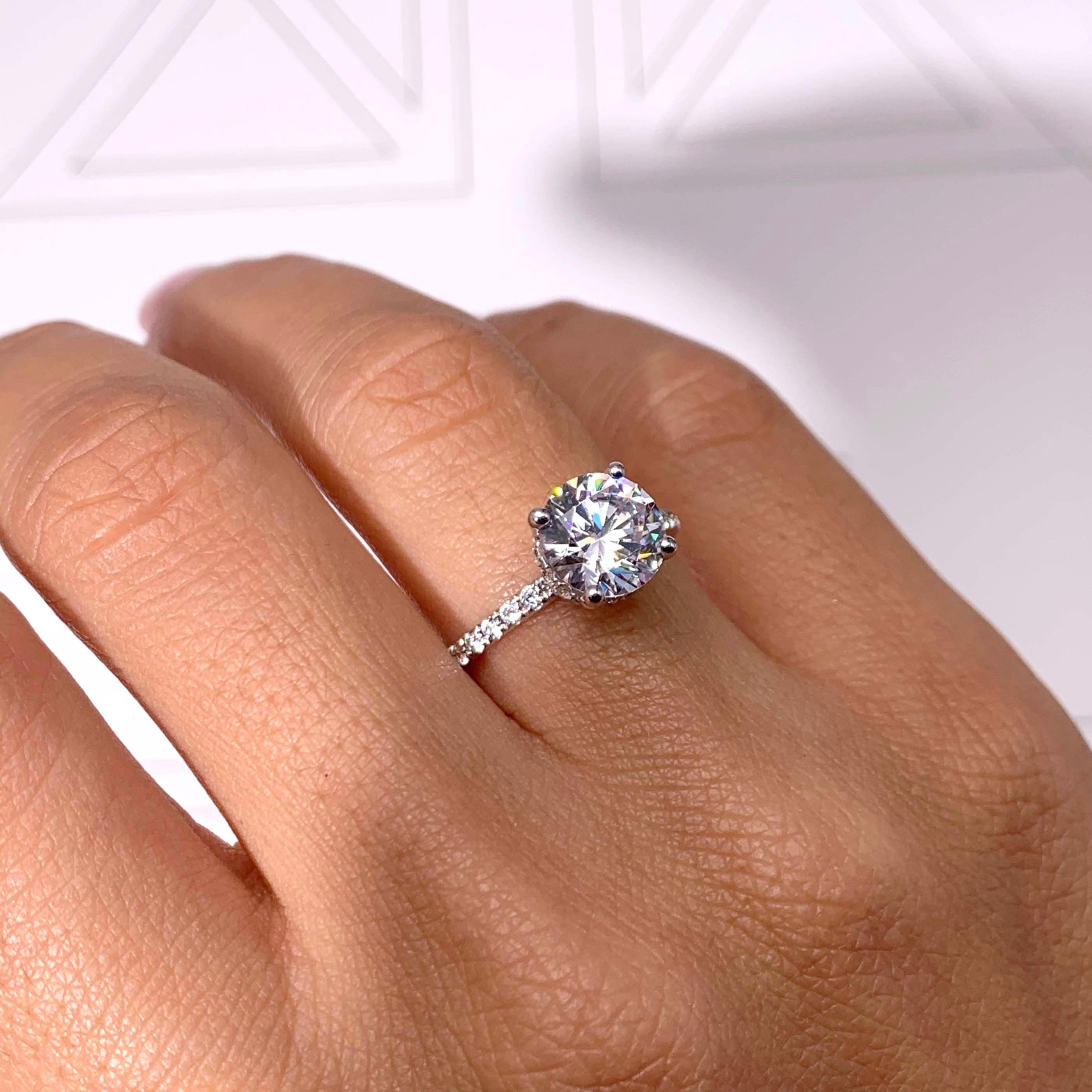Introduction to Lab Grown Diamond Rings
Lab grown diamond rings have surged in popularity over the past decade, capturing the interest of discerning consumers looking for ethical and sustainable alternatives to mined diamonds. These stunning gems, created in controlled laboratory environments, possess the same physical, chemical, and optical properties as their natural counterparts. In this comprehensive guide, we delve into everything you need to know about lab grown diamond rings, from their creation process to the benefits they offer and tips for purchasing the perfect ring.
The Science Behind Lab Grown Diamonds
How Lab Grown Diamonds Are Made
Lab grown diamonds are produced using two primary methods: High Pressure High Temperature (HPHT) and Chemical Vapor Deposition (CVD).
- High Pressure High Temperature (HPHT): This method mimics the natural diamond formation process by subjecting carbon to extreme pressure and temperature conditions. A diamond seed is placed in a chamber where temperatures reach up to 1500°C and pressures of 1.5 million psi. The carbon melts and forms a diamond around the seed, creating a gem that is virtually indistinguishable from a natural diamond.
- Chemical Vapor Deposition (CVD): This technique involves placing a diamond seed in a sealed chamber filled with carbon-rich gas, such as methane. The chamber is heated to around 800°C, causing the gas to ionize and break down, allowing carbon atoms to deposit onto the seed and form a diamond layer by layer. This method offers greater control over the diamond’s size and quality.
Advantages of Lab Grown Diamond Rings
Ethical and Sustainable
One of the most significant benefits of lab grown diamond rings is their ethical production. Unlike mined diamonds, lab grown diamonds do not involve destructive mining practices that can harm the environment and exploit labor. They offer a conflict-free alternative, ensuring that your diamond purchase does not fund unethical practices.
Cost-Effective
Lab grown diamonds are typically 20-40% less expensive than natural diamonds of similar quality. This cost difference allows consumers to purchase larger or higher quality diamonds within the same budget, making them an attractive option for engagement rings and other fine jewelry.
Quality and Variety
랩그로운다이아몬드 반지 are available in a wide range of sizes, shapes, and colors. Advances in technology have made it possible to produce diamonds with fewer inclusions and blemishes, resulting in higher clarity and overall quality. Additionally, lab grown diamonds can be created in a variety of colors, from traditional white to rare hues like blue, pink, and yellow.
Comparing Lab Grown and Natural Diamonds
Visual and Chemical Properties
Lab grown diamonds and natural diamonds are identical in appearance and composition. Both types of diamonds are made of carbon atoms arranged in a crystal lattice structure, giving them their renowned hardness and brilliance. The only difference lies in their origin: lab grown diamonds are created in controlled environments, while natural diamonds are formed over billions of years in the Earth’s mantle.
Certification and Grading
Just like natural diamonds, lab grown diamonds are graded by reputable gemological laboratories, such as the Gemological Institute of America (GIA) and the International Gemological Institute (IGI). These certifications provide detailed information about the diamond’s 4 Cs (cut, color, clarity, and carat weight), ensuring transparency and trust in your purchase.
Choosing the Perfect Lab Grown Diamond Ring
Determine Your Budget
Before starting your search, it’s essential to establish a budget. Lab grown diamonds offer excellent value, allowing you to get more for your money. Decide how much you are willing to spend and prioritize the aspects of the diamond that are most important to you, whether it’s carat size, cut quality, or color.
Select the Right Diamond Shape
The shape of the diamond is a matter of personal preference. Popular shapes include round, princess, cushion, emerald, and oval. Each shape has its unique characteristics and appeal. For example, round diamonds are known for their exceptional brilliance, while emerald cuts are prized for their elegant, elongated appearance.
Understand the 4 Cs
Familiarize yourself with the 4 Cs to make an informed decision:
- Cut: The cut determines the diamond’s brilliance and sparkle. An excellent cut reflects light beautifully, making the diamond more dazzling.
- Color: Diamond color is graded on a scale from D (colorless) to Z (light yellow or brown). Colorless diamonds are rarer and more valuable, but near-colorless diamonds can also appear very white and are more affordable.
- Clarity: Clarity refers to the presence of internal or external imperfections (inclusions and blemishes). The fewer the imperfections, the higher the clarity grade.
- Carat Weight: Carat weight measures the diamond’s size. Larger diamonds are rarer and more expensive, but the other three Cs also significantly influence the diamond’s overall appearance and value.
Choose a Trusted Retailer
Purchase your lab grown diamond ring from a reputable jeweler who provides certified diamonds. Look for retailers who offer a wide selection, transparent pricing, and a solid return policy. Reading reviews and seeking recommendations can also help ensure a positive buying experience.
Caring for Your Lab Grown Diamond Ring
Regular Cleaning
Keep your lab grown diamond ring sparkling by cleaning it regularly. Soak the ring in a solution of warm water and mild dish soap for 15-20 minutes, then gently scrub with a soft toothbrush. Rinse thoroughly and dry with a lint-free cloth.
Professional Maintenance
Take your ring to a professional jeweler for periodic inspections and cleaning lab created diamonds. They can check for loose settings and ensure your diamond remains secure. Professional cleanings can also restore the diamond’s brilliance and remove any stubborn dirt or grime.
Proper Storage
When not wearing your lab grown diamond ring, store it in a separate compartment of a jewelry box or a soft pouch to prevent scratches. Avoid exposing the ring to harsh chemicals or extreme temperatures, as these can damage the metal setting and affect the diamond’s appearance.
Conclusion
Lab grown diamond rings offer an exquisite, ethical, and cost-effective alternative to natural diamonds. With advancements in technology, these diamonds have become virtually indistinguishable from mined diamonds, providing the same brilliance and beauty. By understanding the science behind their creation, the advantages they offer, and the key factors to consider when purchasing, you can confidently choose a lab grown diamond ring that suits your style and values.

